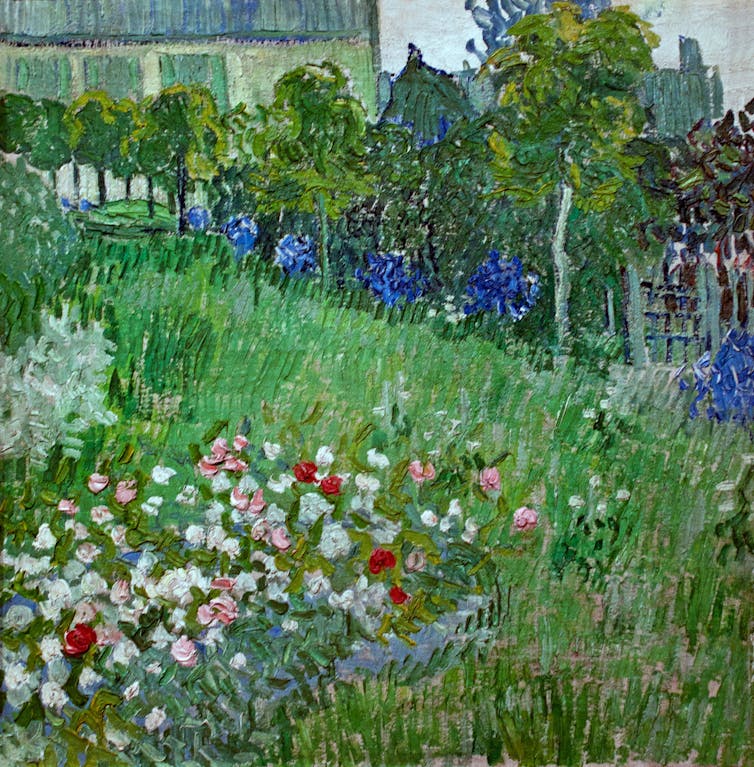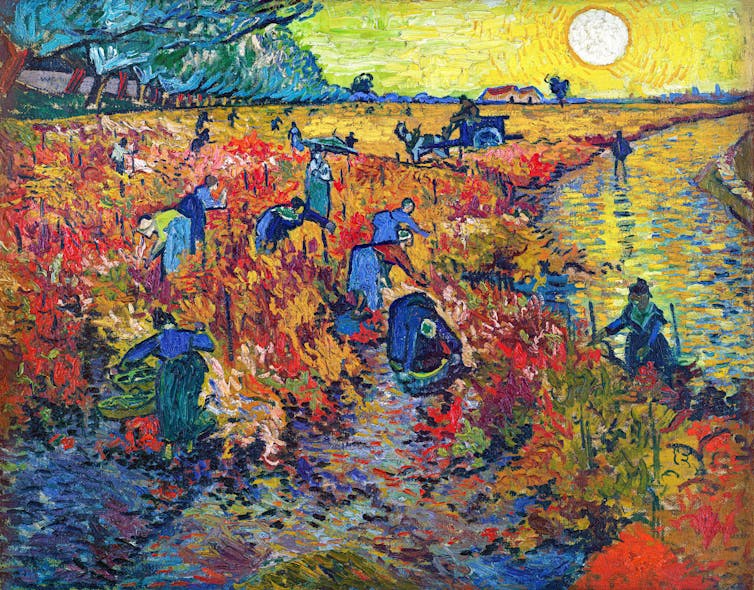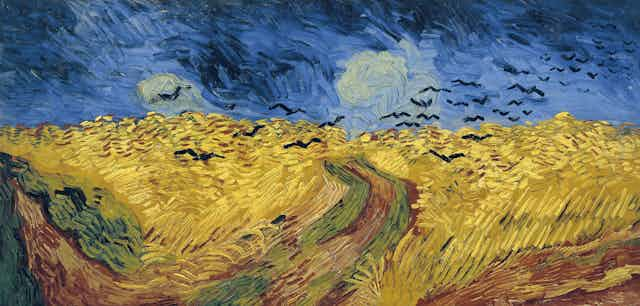Though he had spent the previous year at an asylum in Saint-Rémy-de-Provence in the south of France, Vincent van Gogh arrived in the village of Auvers-sur-Oise, just north of Paris, in an optimistic mood. It was here, in 1890, that he would spend the last few months of his life which, despite the depression that would soon return, were his most productive.
The move offered him the prospect of a fresh start, close to his brother Theo, and under the watchful eye of Paul Gachet, a homeopathic doctor with an interest in art and mental wellbeing. Over the course of the next two months, Van Gogh produced no fewer than 74 paintings and more than 50 drawings, which are catalogued chronologically by Nienke Bakker, Emmanuel Coquery, Louis van Tilborgh and Teio Meedendorf in their book, Van Gogh in Auvers-sur-Oise: His Final Months.

As Van Tilborgh observes in the opening essay, Van Gogh’s final works have “a special, almost existential significance” for us. The paintings most closely identified with his final days include the profoundly melancholic Wheatfield with Crows (Van Gogh Museum, Amsterdam), whose central path leads us through the golden wheat towards an intensely brooding sky. It was here, in the fields above Auvers, that Van Gogh would shoot himself at the age of 37 in July 1890.
As Meedendorf recounts, Van Gogh was initially enchanted by this “distinctive and picturesque” village nestling in the heart of the countryside. Accessible from Paris by train, it remained surprisingly unspoiled, with thatched whitewashed cottages and a distinctive medieval church.
At home in nature
Unlike previous inhabitants of Auvers, such as the landscape artist and precursor of impressionism, Charles-François Daubigny, Van Gogh ignored the nearby river Oise. He preferred to record the village, its quaint old buildings merging organically with the landscape and the surrounding vineyards. He also chose surprisingly modern motifs such as the town hall bedecked with flags and bunting on Bastille Day.
Another important subject, explored by Nienke Bakker, was a series of floral still lifes, painted between late May and mid-June 1890. Van Gogh had painted irises and roses as if “in a frenzy” towards the end of his stay at Saint-Rémy and was optimistic that his pictures would find a buyer, despite the fact that they had failed to do so in the past.
He had a preference for wild cornflowers, daisies, poppies, buttercups and thistles, but also painted Chinese asters, carnations and marigolds, blossoming chestnuts and acacia, rendered in rhythmic patterns that dominated the picture space.

Flowers and ears of wheat appear also in his portraits, most memorably in the two of Dr Gachet, leaning on his elbow in a classic melancholic pose and clutching a sprig of foxglove, which he used in his homeopathic remedies.
Gachet was an important early supporter, not only of Van Gogh, but of the impressionist artists Camille Pissarro, who lived at nearby Pontoise, and Paul Cézanne, who painted Gachet’s distinctive white house at Auvers.
The final days
The book includes a useful map of Auvers-sur-Oise which identifies many of the sites at which Van Gogh set up his easel. One of these is Tree Roots(Van Gogh Museum, Amsterdam), recently identified as the final work produced by the artist.
It is one of a series of 13 works that were distinctive for their double-square format. As Emmanuel Coquery explains, the format derived from Daubigny, who is referenced in the third canvas in the series, Daubigny’s Garden (Rudolf Staechelin Collection).
Daubigny is still celebrated today in the village. His house and studio, decorated by his friend Camille Corot, and also his children, have been preserved for posterity. So, too, has the room at the Auberge Ravoux, in which Van Gogh died on 29 July 1890.
Fittingly, the last two essays in this brilliantly researched and colourfully illustrated book focus on Van Gogh’s final days. Following a visit to Theo in early July, the artist was beset by an extended period of depression, brought on by feelings that he was becoming a burden to his brother.

In his letters he wrote: “My life … is attacked at the very root, my step also is faltering.” He described his latest landscapes as expressions of “sadness, extreme loneliness”. Eventually he shot himself in the chest with a revolver and died in Theo’s arms nearly two days later.
His body was laid to rest in a spacious, sunny plot in the graveyard, close to the wheatfields he loved so much. In 1914, Theo’s remains were transferred to the same ivy-covered grave, remarkable for its simplicity.
As the final essay by Bregje Gerritse and Sara Tas shows, even before his death, Van Gogh was beginning to be appreciated by critics such as Gustave Kahn and Albert Aurier.
He made his only recorded sale when the Belgian artist Anna Boch purchased The Red Vineyard (Pushkin State Museum of Fine Arts, Moscow) for 400 francs. Before long he would posthumously achieve the fame and commercial success he had so longed for.

Looking for something good? Cut through the noise with a carefully curated selection of the latest releases, live events and exhibitions, straight to your inbox every fortnight, on Fridays. Sign up here.

